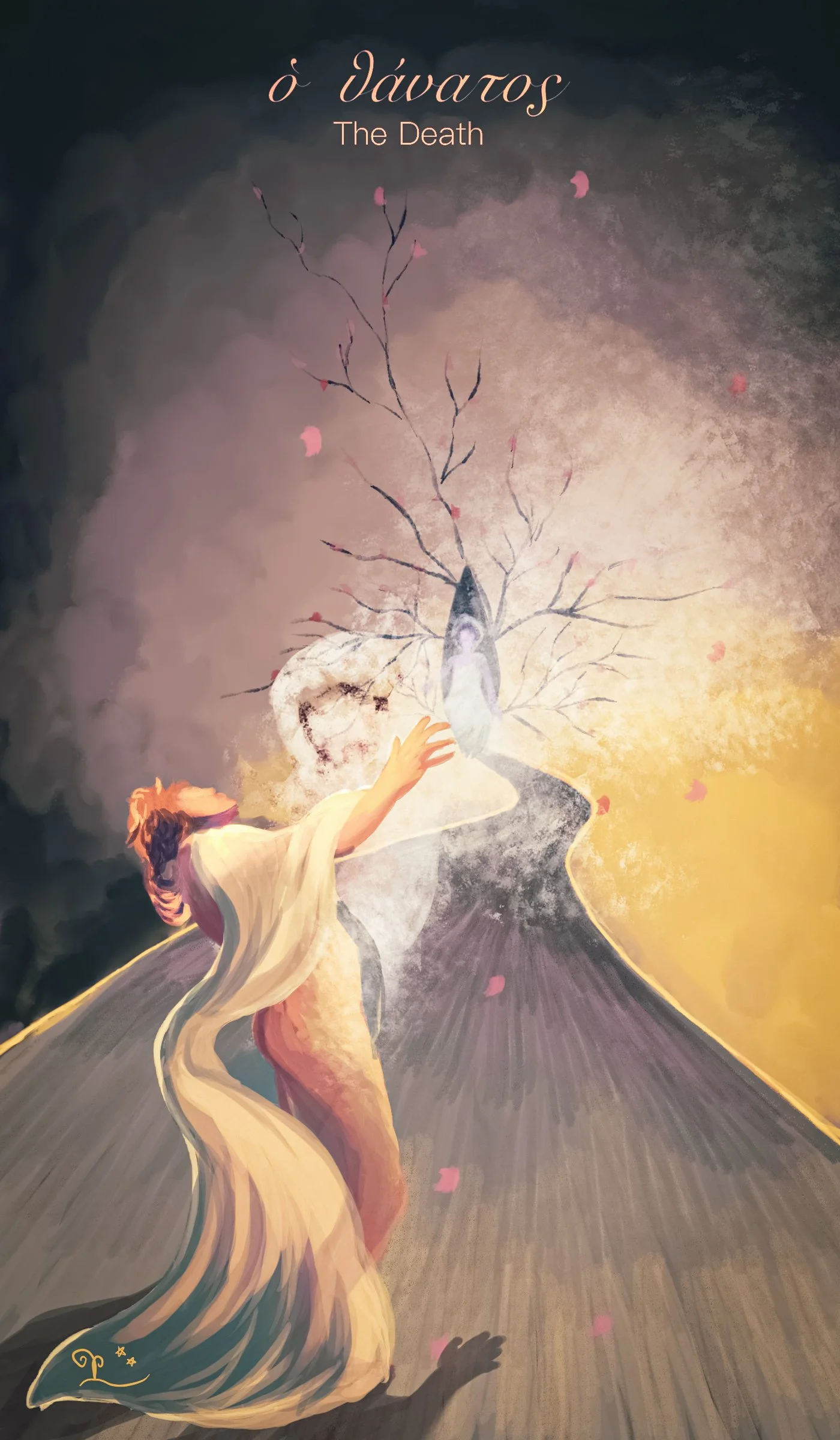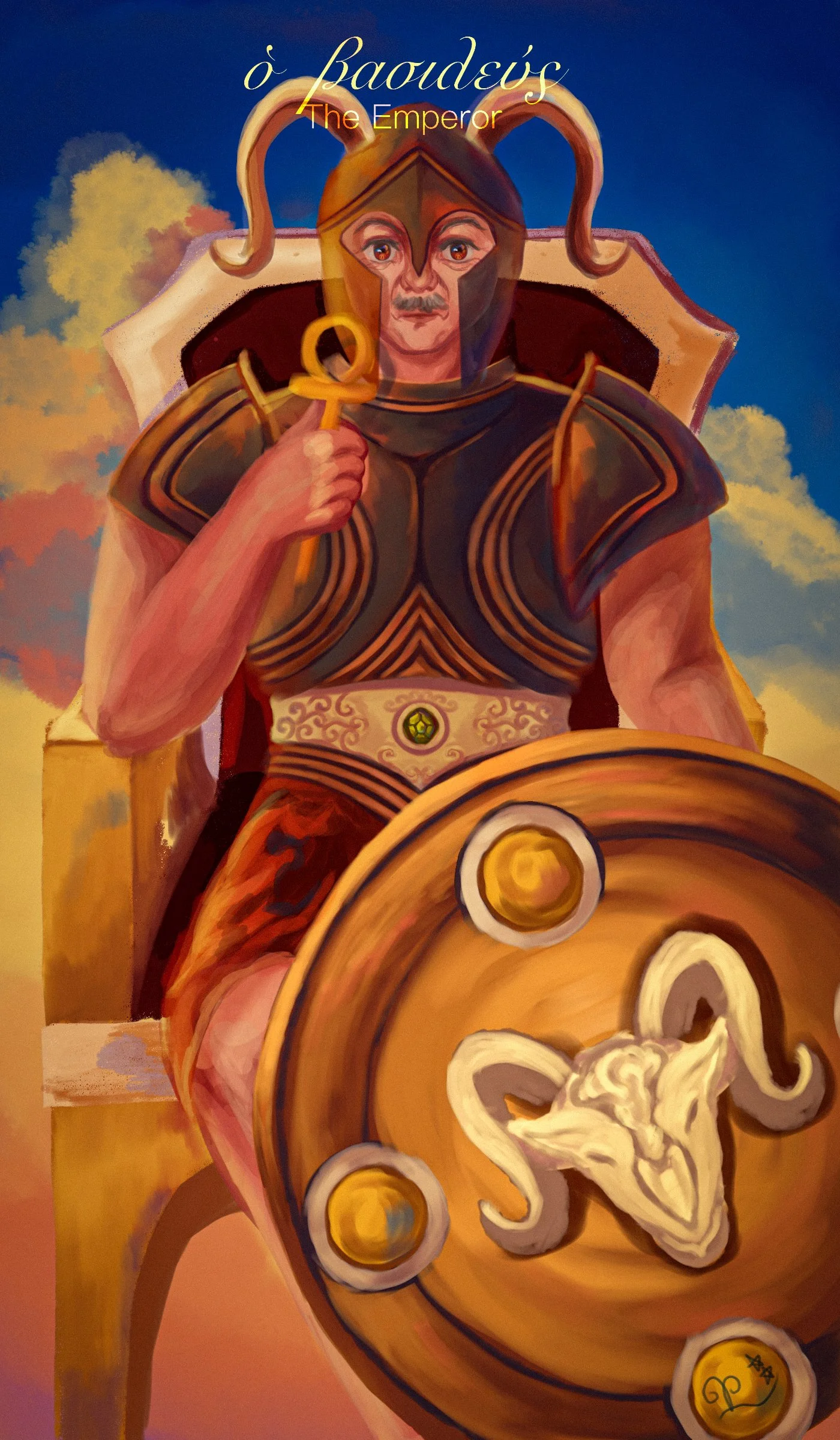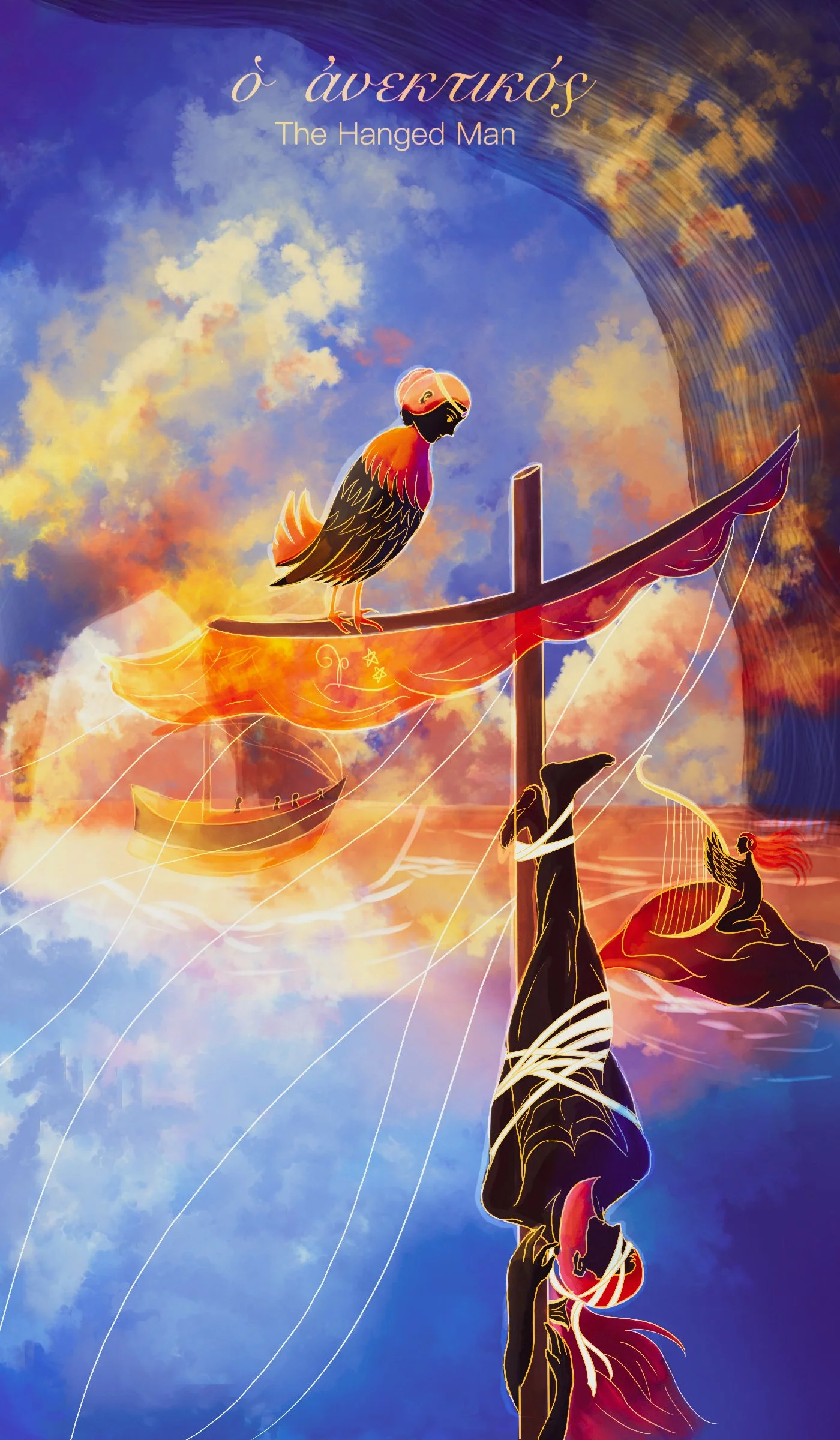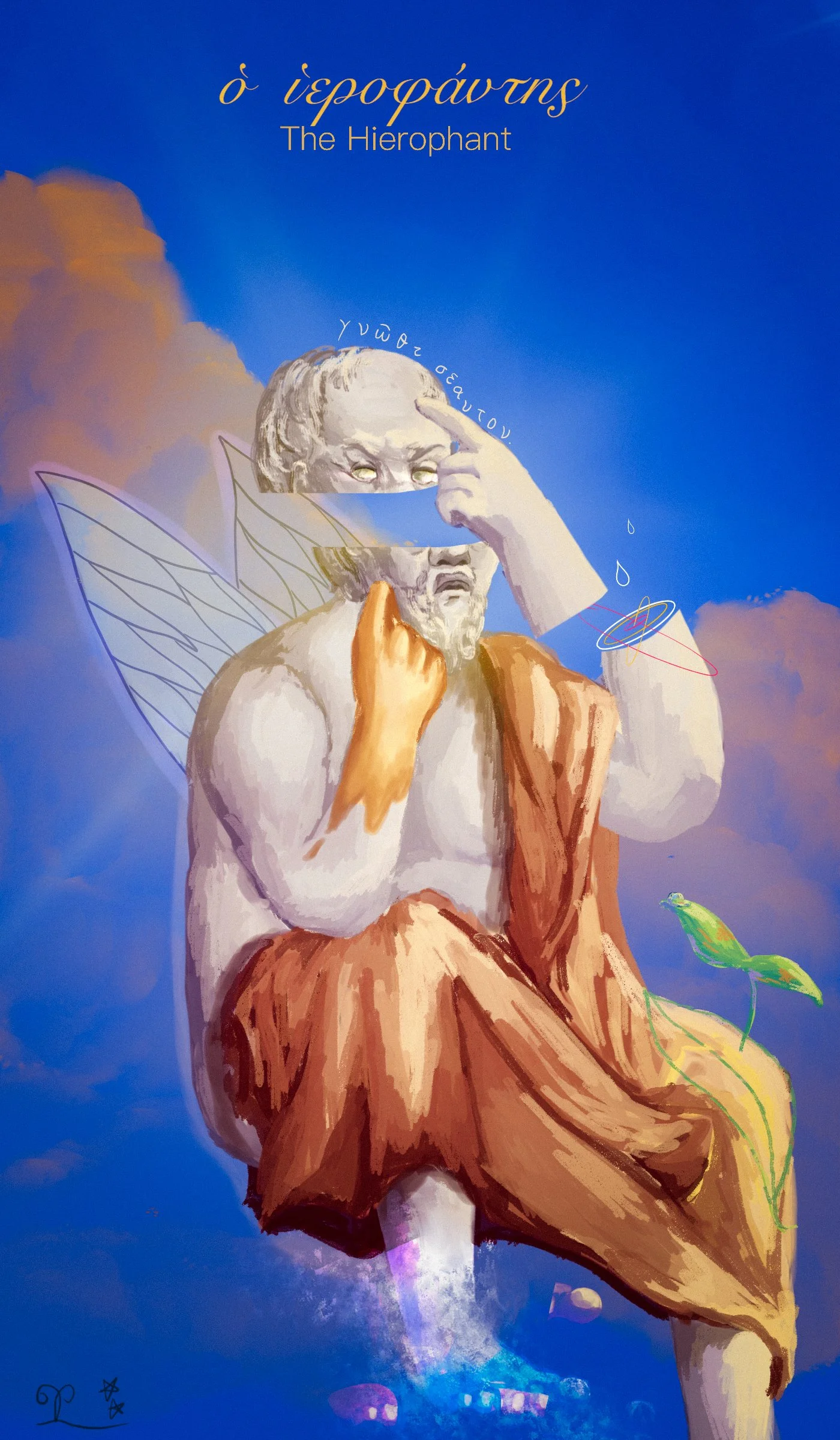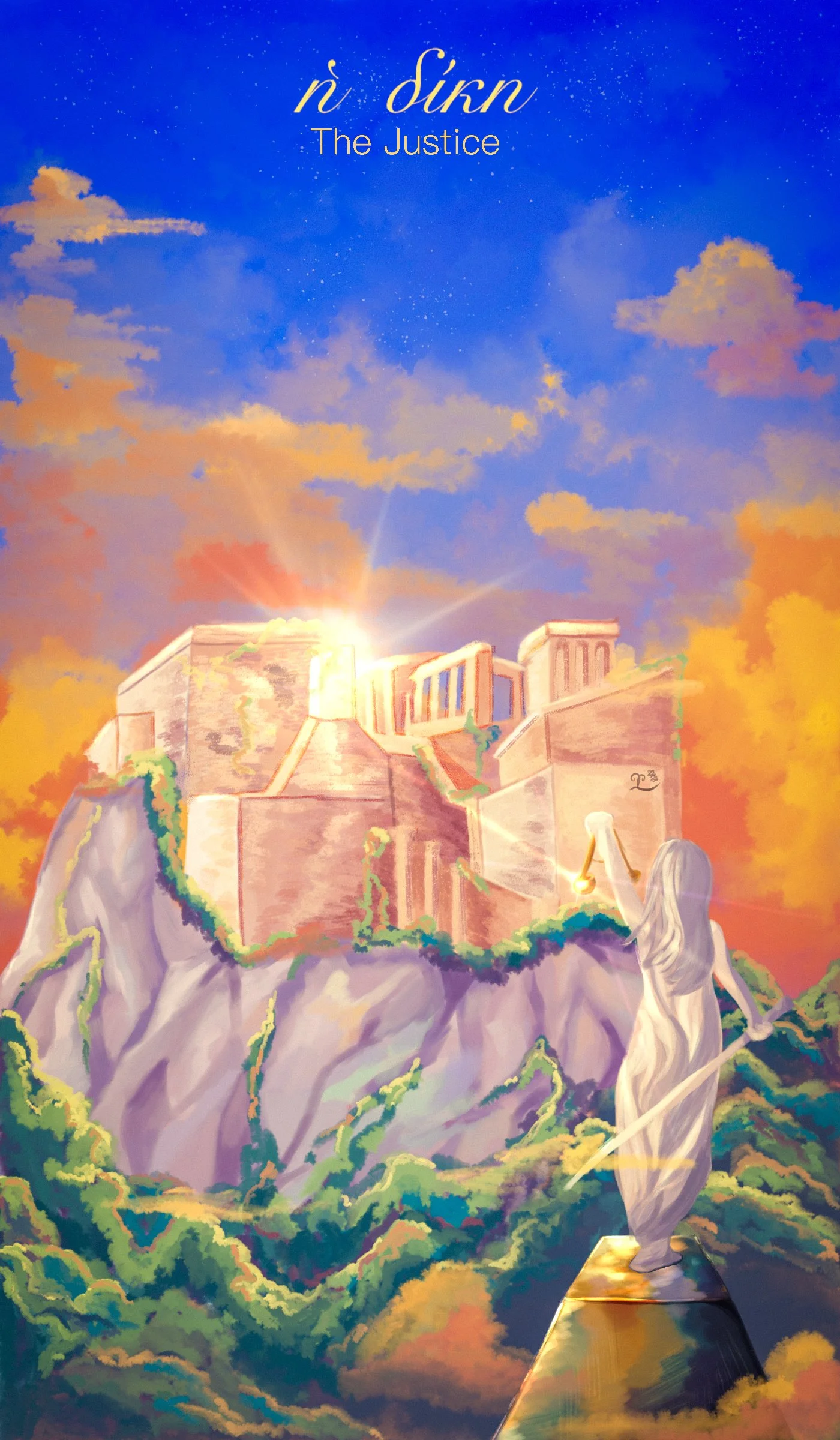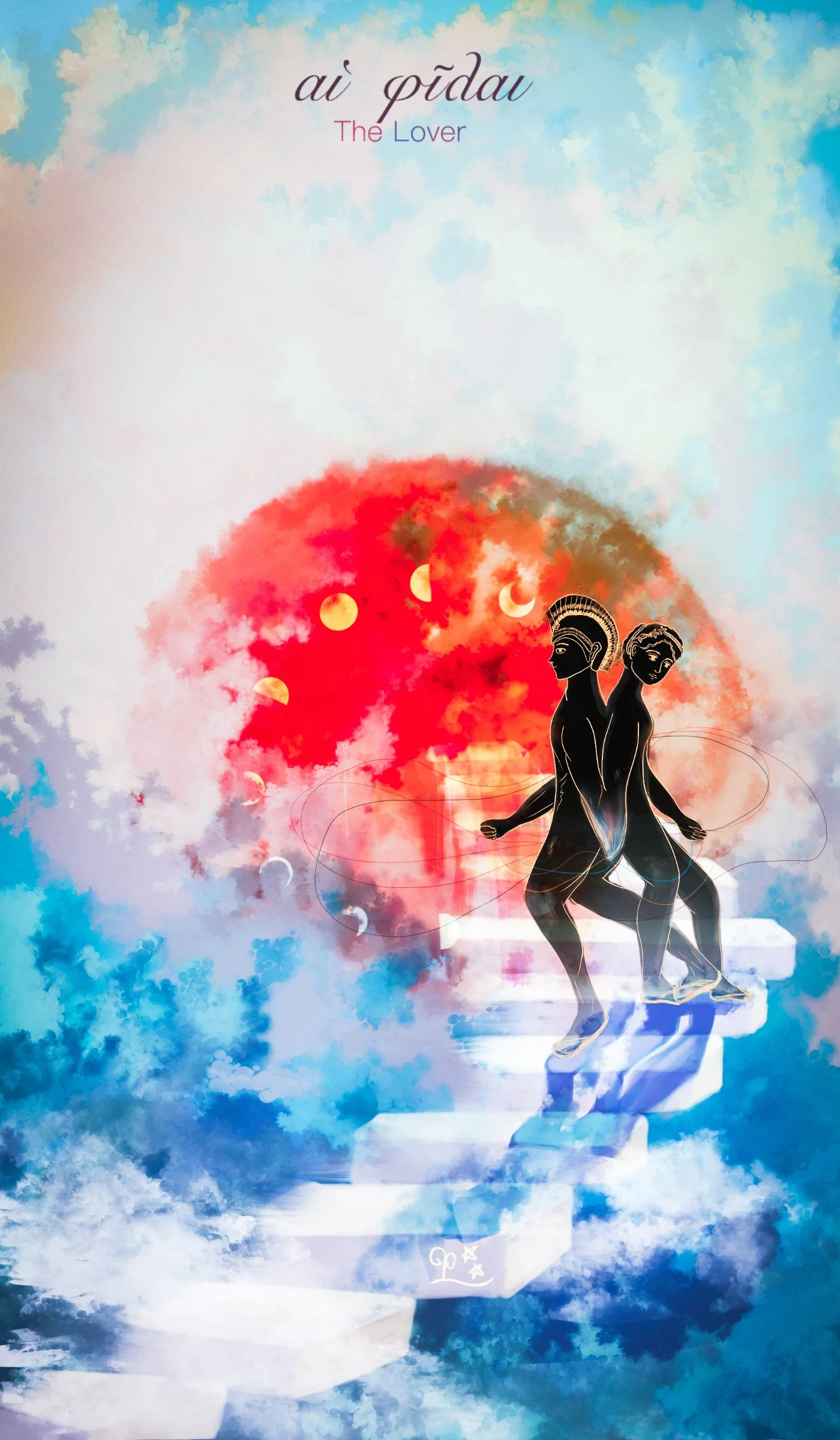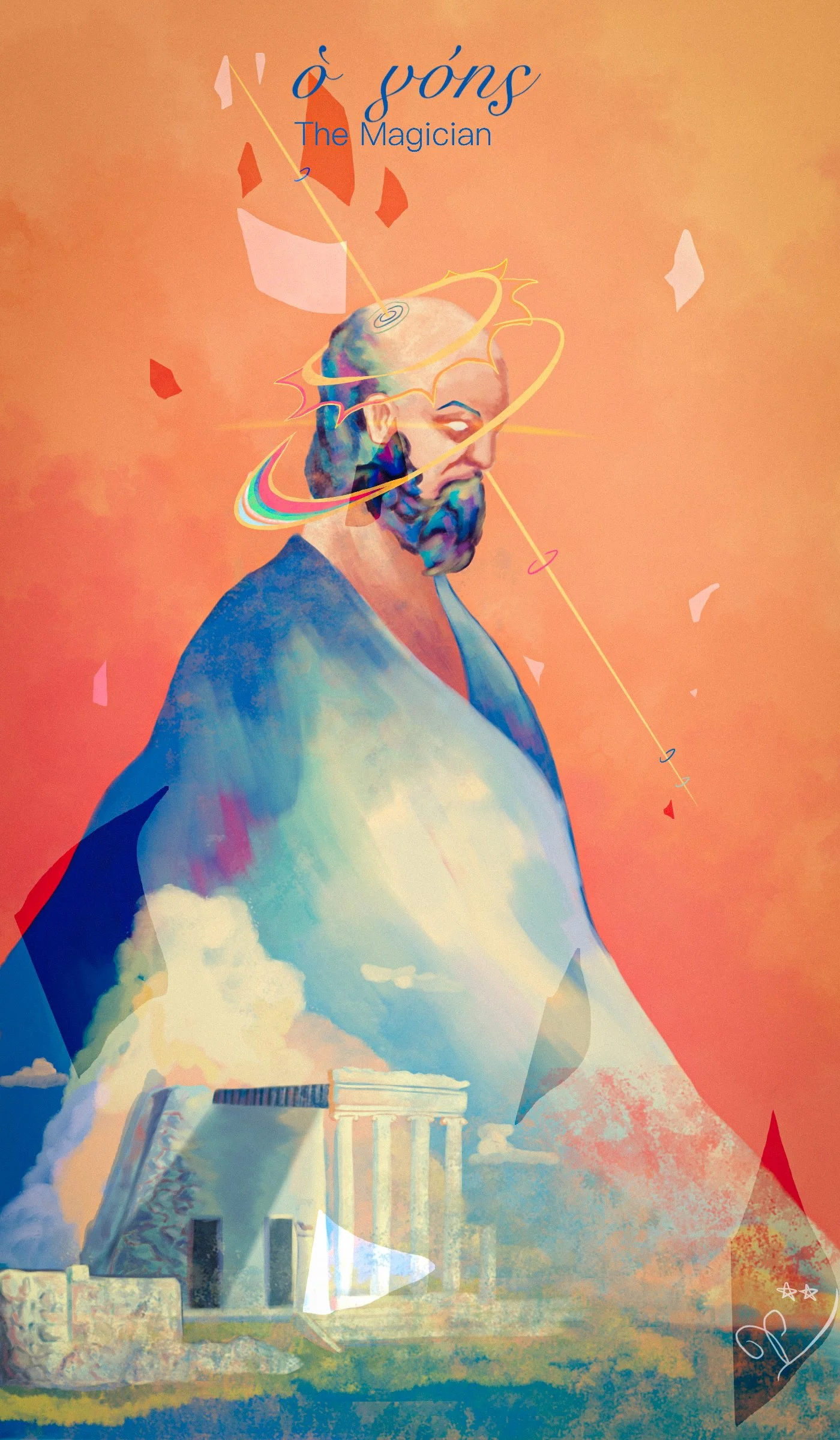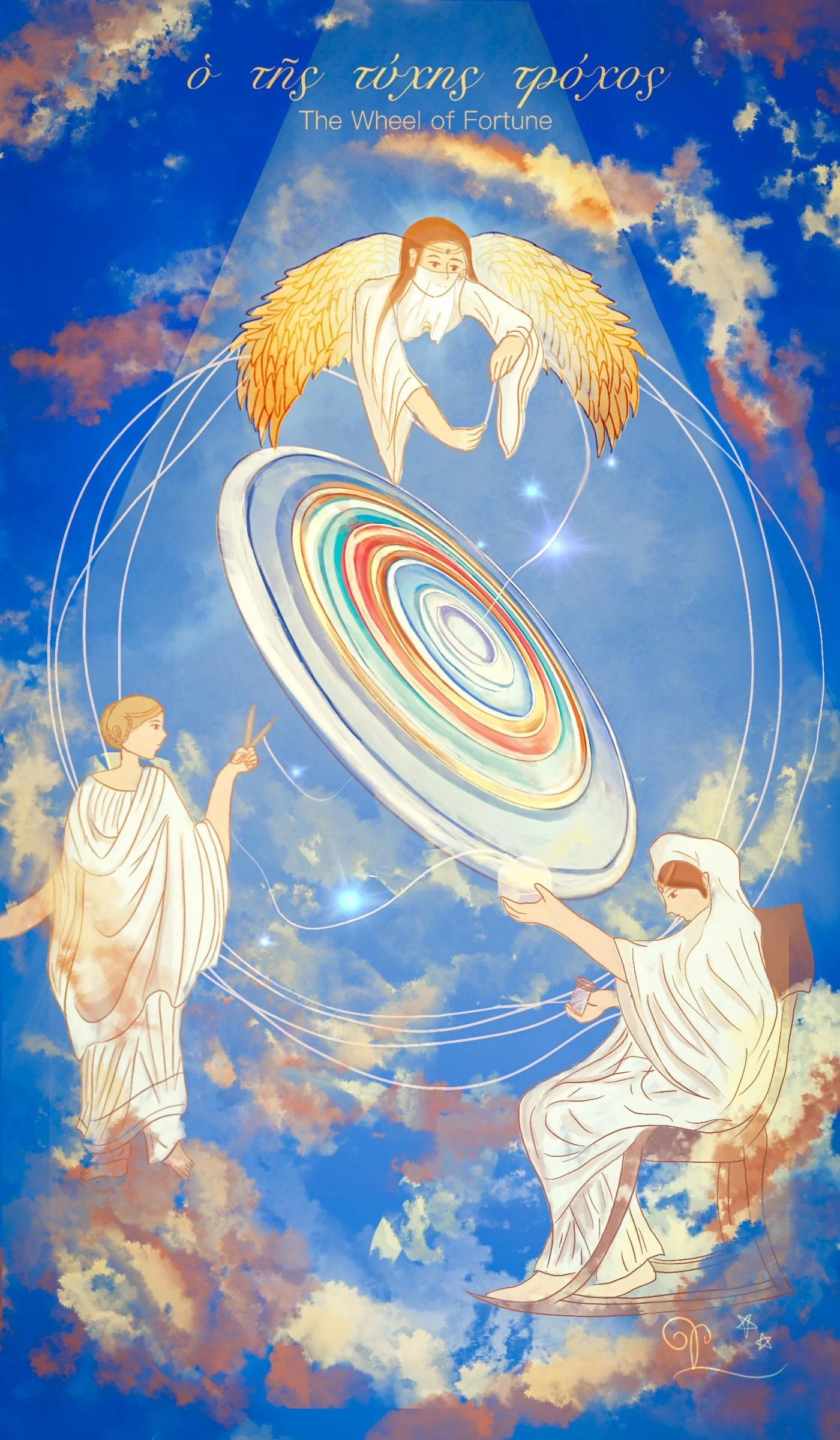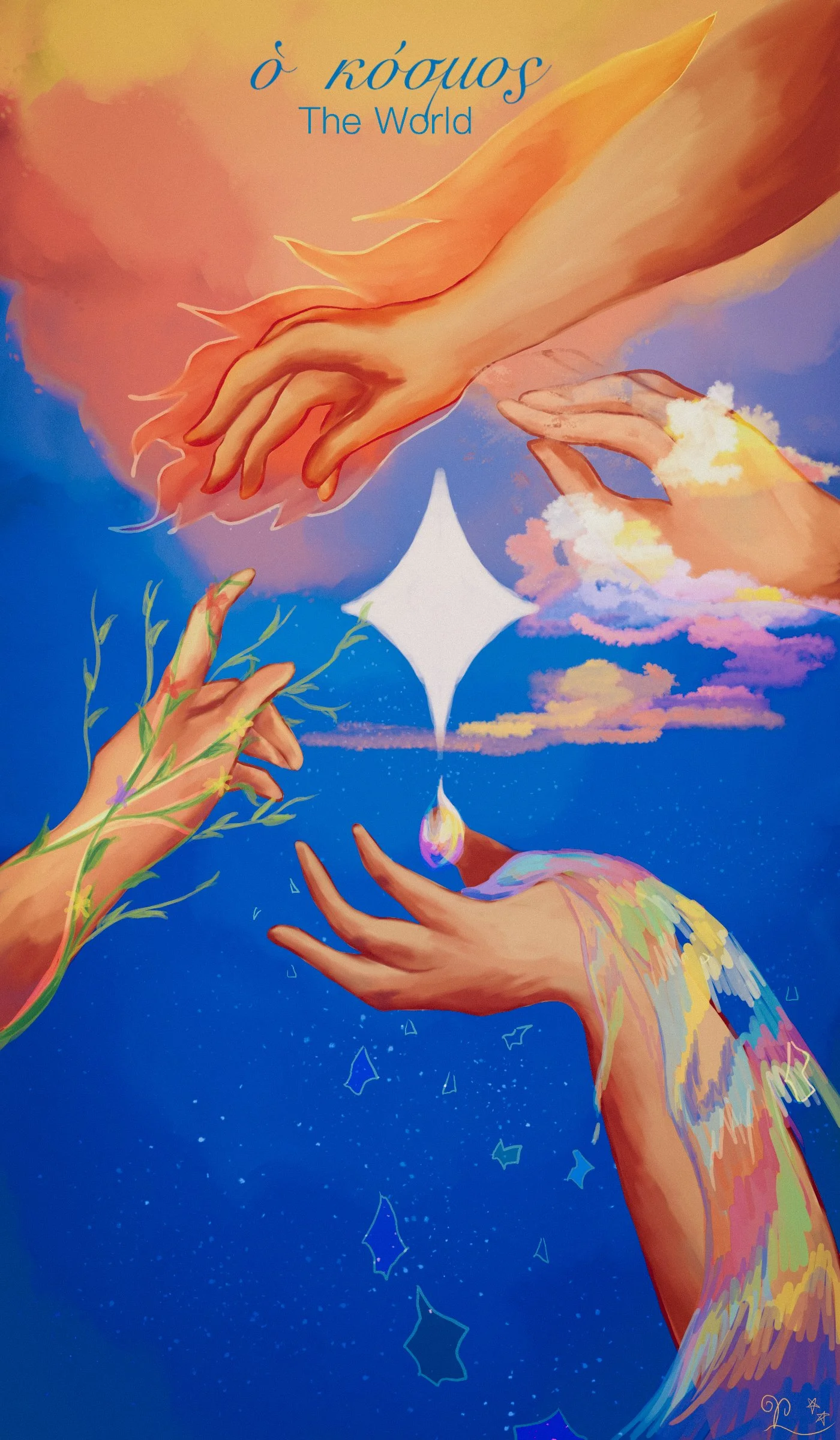Hellenic Tarot
-
Death
The card is inspired by the myth of tragic lovers, namely Orpheus and Eurydice. They fall in love at the first sight and are blessed by the god of marriage. However, Eurydice soon passed away due to the deadly snake-bite. As the most talented lyre play of ancient time, Orpheus attracted Hades with his mournful melody and beseeched Hades to save his wife. Hades wept and approved his request but forbade him from looking at Eurydice. However, as he was upon the exit, he failed to refrain from his desire to embrace his wife and caught a glimpse of his lover. Consequently, Eurydice sank back into the underworld and Orpheus was denied entry. The card death usually indicates a regretful, anguishing yet destined separation or ending. However, it also signifies a new beginning of our life that we must embrace after destruction.
-
Emperor
Agamemnon was the king of Argos/Mycenae, the son of Queen Aerope and the husband of Helen’s sister Clytemnestra. He unified and commanded the Greek arm force in the Trojan war. He was often compared to Achilles and criticized for his immaturity, incapability, and impetuosity. Still, Agamemnon was respected as a strong, adequate leader and an excellent warrior. Like The Emperor in the Smith White Tarot, Agamemnon was stressed about losing his power and often felt incompetent in his conflicts with Achilles.
-
Hanged Man
During his homeward journey, Odysseus encountered the enchanting sirens, half bird creatures disguised as beautiful women of euphonic voice, enticing sailors to their doom. Taking Circe’s warning to heart yet intrigued by siren’s captivating singing, Odysseus plugs his crew with bees’ wax and lets them strain him to the ship’s mast tightly. Although Odysseus is bewitched by the dulcet singing of sirens, none of his crew hears his craving. In Smith White’s original deck, Hanged Man represents tolerance and abstinence which corresponds with refraining of Odysseus.
-
Hierophant
The Hierophant portrays Socrates, the credited founder of Western philosophy contemplating among the cloud of thought. His red robe represents his authority in philosophy and his rebel against ignorant norms; his vanishing foot signifies detachment from reality; his back wing and slightly green eye implies him as the gadfly. On top of his head writes his famous motto translates into “know thyself.”
-
Justice
The Areopagus was erected on the protuberant rock of northwest Acropolis of Athens. During the pre-classical era, the Areopagus served as the Aristocratic council. After reforms of Cleisthenes, Areopagus, the council expanded to 500. Nevertheless, The Areopagus retained its legislative function. It tried various prosecutions, including murder, arson, and unconstitutional acts. In mythology, the war god Ares was also tried on Areopagus for murdering the son of Poseidon. The Areopagus was revived as the sacred, prestigious court in the Classical Age until Roman hegemony.
-
Lover
In Plato’s Symposium, the Ancient Greek comedian & playwright Aristophanes shares his love theory. He believes humans were once androgynous, each of them outfitted with two faces, four hands, and four legs. Afraid of their inestimable power, Zeus splits them in halves. The weakened humans are constantly longing for their other halves, embracing each other, and hoping to rejoin again. Pitying their misery, Zeus grants them sex organs. Aristophanes considers love as our intrinsic nature, fervent desire to heal the wound through perpetual reunion.
-
Magician
The card magician is inspired by Anaximander, the father of cosmology. As a Milesian, he was closely associated with Thales and Hecataeus. He believed the world originated from aperion, the “Unlimited” without spatial or temporal restrictions, neither born nor unborn. He conceived Celestial Bodies as wheels, both sun and moon hollow, fiery rings. Unlike his contemporaries, he considered men originated from other animals, presumably fish. Although many of his theories were falsified today, Anaximander remained commendable for his courageous reasoning and scientific thinking.
-
Wheel of Fortune
Moirai, known as Goddesses of Fate, was believed to ensure the destiny of mortals and gods according to universal laws. In Plato’s Republic, the three Moirai accompanies the melody of Seirenes with their singing while weaving the threads of life. The cycle of fate begins with Clotho spinning the thread of life from her spindle, followed by Lachesis, who measures the thread of life with her measuring rod. When the time has come, Atropos cuts the thread of life with her shears. The three goddesses, working together perpetually, promotes the endless, inexorable yet transient cycle of fate just like the Wheel of Fortune spins.
-
World
The world encompasses four basic elements, air, fire, earth, and water. In the card, Heraclitus (fire), Thales (Water), Anaximenes (Air), and Parmenides (the world in one) gathered around the “origin of the world.” Holding “the nature” in harmony. Some Presocratic philosophers, such as Empedocles believed that the world is made of four elements and in constant variance of love and strive. In Tarot of Marseilles, the world is fire element instead of the earth element since he believed the world is unstable and unpredictable. Pay attention to this fact besides harmony and stability when you are reading this tarot card set.
